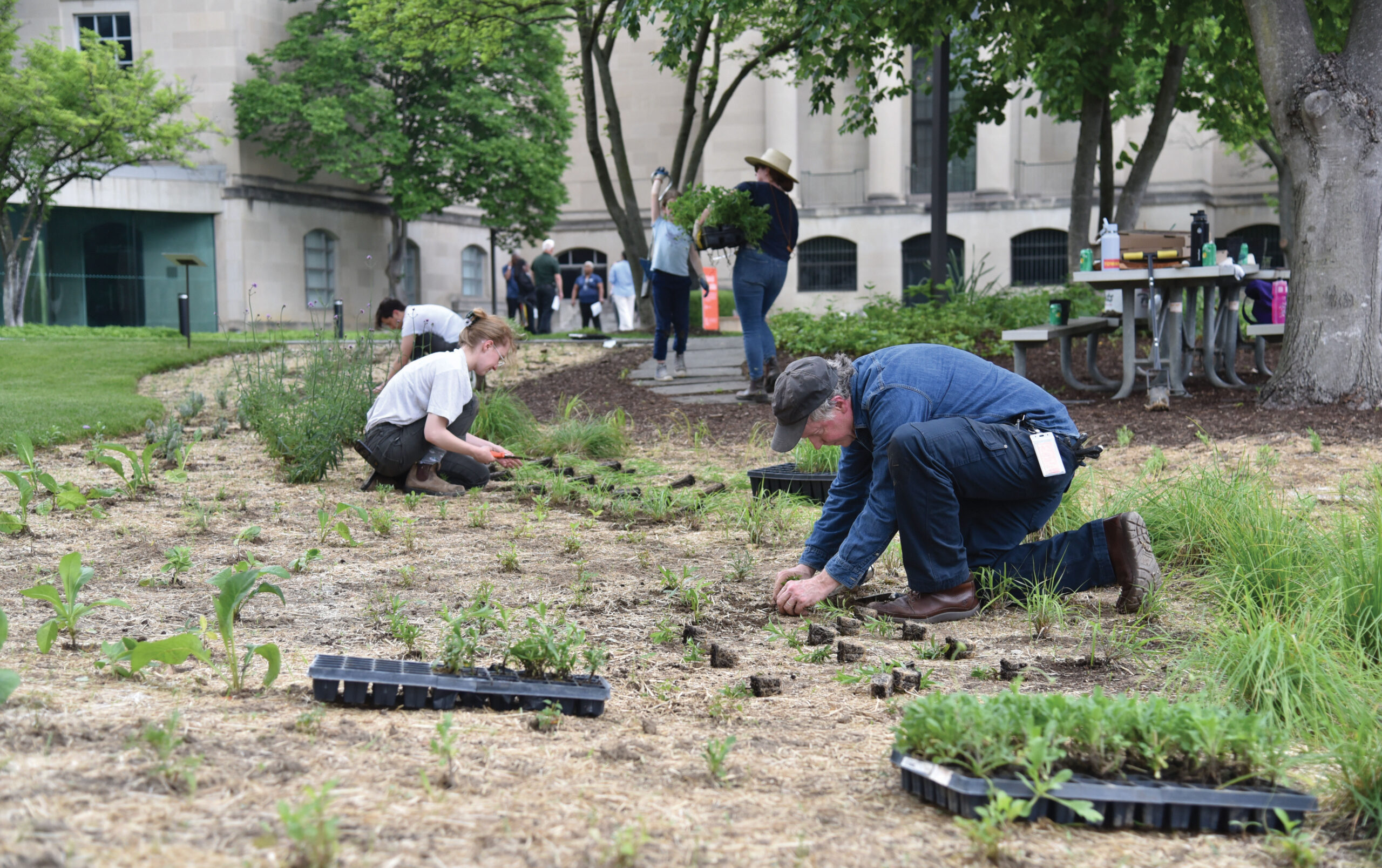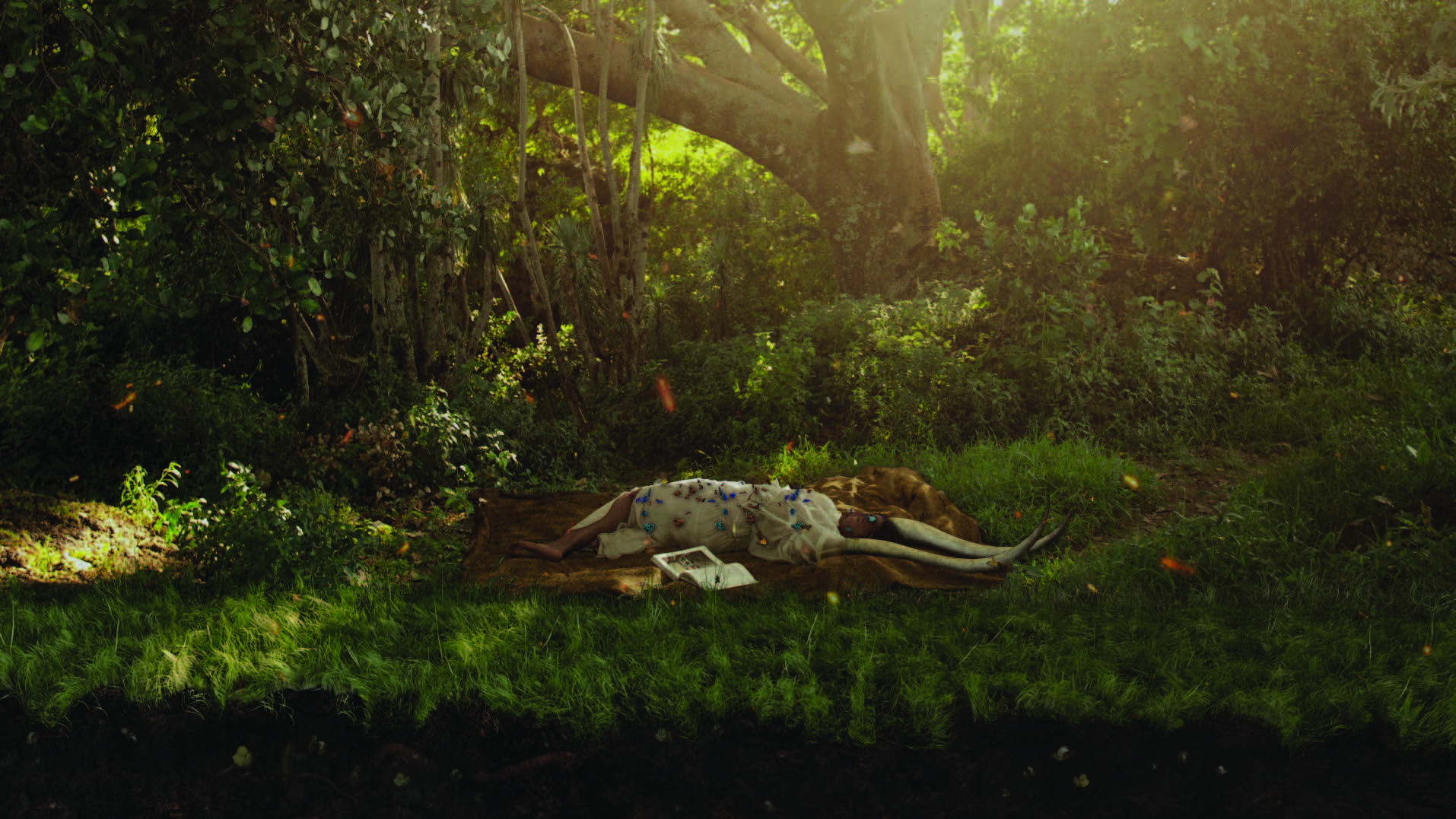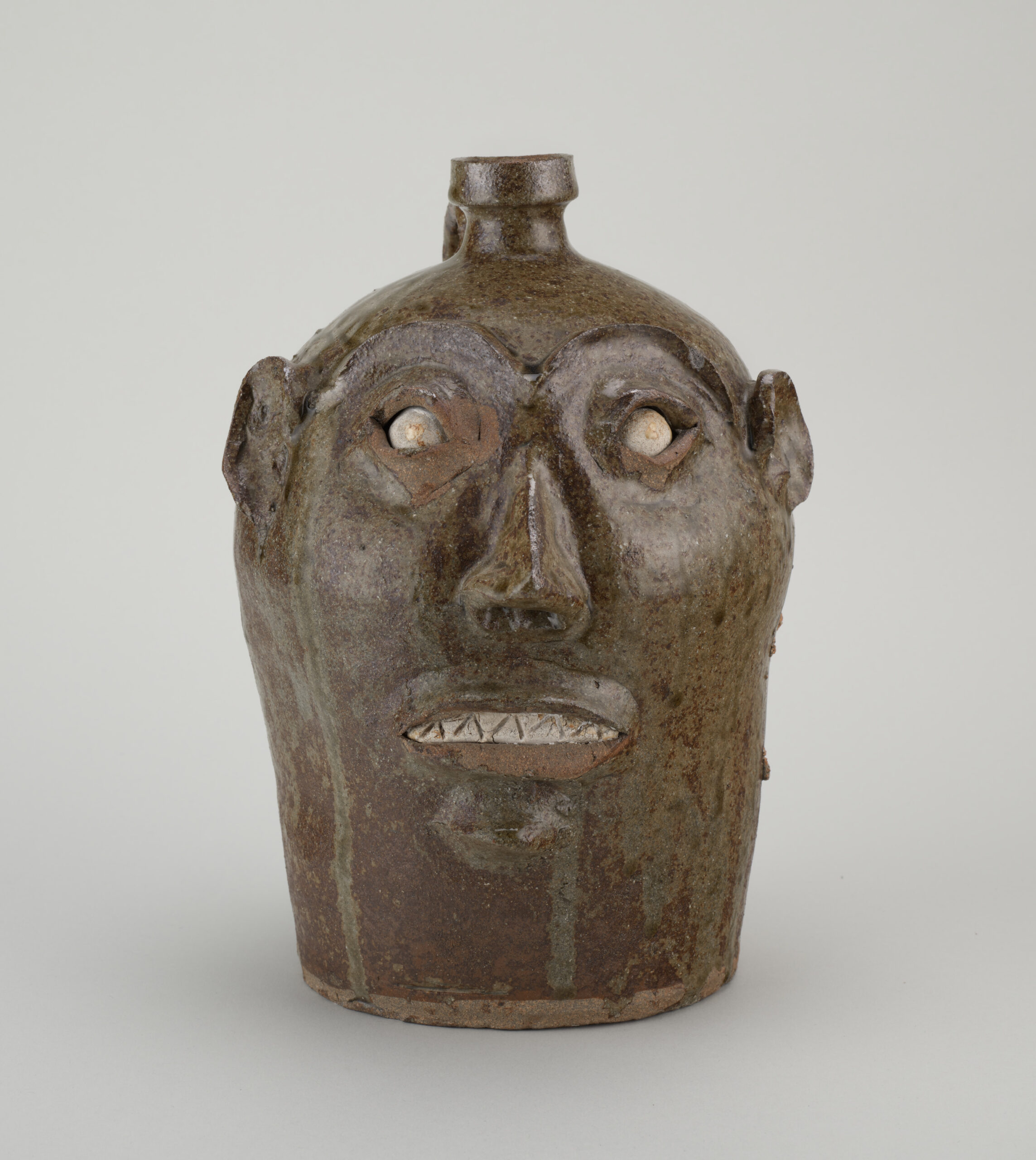
A 19th-century ceramic shows how a Black potter thrived in the post-Civil War South
The story of Fortune Justice, a Black potter (c.1856–1898) in the Edgefield Pottery District (present-day Edgefield and Aiken Counties), South Carolina, is a testament to the resilience, creativity, and often-overlooked contributions of Black artisans in the larger history of American ceramics. Trained in the craft while enslaved, Justice’s talents flourished after emancipation, marking him as one of the few named Black potters from the Edgefield pottery district whose work has endured to the present day. His story encapsulates the ingenuity and resilience of Black artists in the post-Civil War South. At the heart of Justice’s legacy lies his mastery of form and materials, exemplified by this Face Jug (c. 1870-1880) attributed to Justice, a recent acquisition at the BMA currently on view in the American Wing, Scott 1 gallery.
A Community of Black Artists
The stoneware manufacturing communities in Edgefield, South Carolina, are a fascinating microhistory of generations of enslaved, emancipated, and free Black artisans and craftspeople. While most research into the history of Edgefield has focused on the white owners of manufacturing centers as well as the Black poet-potter David Drake, the identities of Black craftspeople have been purposefully neglected and erased from history, so the attributions to artists such as Fortune Justice are paramount in partially recovering these earlier histories of Black artists.
“There were hundreds of black ceramicists working in the United States in the 19th century, but Fortune Justice is one of only a handful of makers for whom we have a work of art and can ascribe it to a particular maker,” shares Brittany Luberda, Anne Stone Associate Curator of Decorative Arts.
Lack of documentation—birth, marriage, and death records—as well as the purposeful erasure of enslaved artists’ self-agency, artistry, labor, and very humanity makes this recovery especially difficult. Corbett Toussaint, a collector and lay historian of traditional Southern stoneware, has worked to uncover as many of the names and stories of these all-but-forgotten artisans. In the Journal of Southern Decorative Arts, she offers brief personal and professional histories of Black artisans, such as Fortune Justice. Toussaint states that these individual histories offer “but a glimpse of a much larger and evolving story of community, commerce, and continuity.”[i]
In the early 19th century, white newspaper editor and land prospector Abner Landrum discovered kaolin near his home in South Carolina and, with a state loan, began a ceramics industry, quickly developing alkaline-glazed stoneware and a local industry built upon the enforced labor of enslaved people.[ii] The Landrum brothers (John, Abner, and Amos) began the first three Edgefield district potteries, which expanded to over 12 manufacturers over the course of the century with over 200 Black artists working in the district. Prior to the Emancipation Proclamation of 1863, Edgefield pottery was primarily produced by enslaved African ceramicists, and after the end of the Civil War, and with the support of the Freedmen’s Bureau Acts of 1865 and 1866—which among its other protections and initiatives supervised contracts between freedmen and employers—many of the emancipated potters continued to work at the same manufacturers but as paid laborers and artists with contracts.
Justice’s story is deeply intertwined with the vibrant community of Black artists who shaped the Edgefield pottery industry and those who thrived during the Reconstruction era. Toussaint has uncovered only brief details of this third-generation potter’s life outside of his career: Justice married, raised a large family, and died at age 42. Justice is also mentioned on legal and financial documents pertaining to Benjamin Franklin Landrum (a stoneware factory owner descended from the Landrum brothers): Justice was a witness to legal changes to Landrum’s will, and later purchased stoneware crafting articles from the Landrum estate.[iii]
The discovery of two signed gravestones engraved with “F. E. Justice” as the tombstone maker in an Edgefield churchyard in the late 1980s allowed art historians to more recently conduct a technical analysis against other pieces of existing pottery, and make a match in the stylistic lettering with a work in the Smithsonian’s National Museum of American History collection (CE 65.1065).
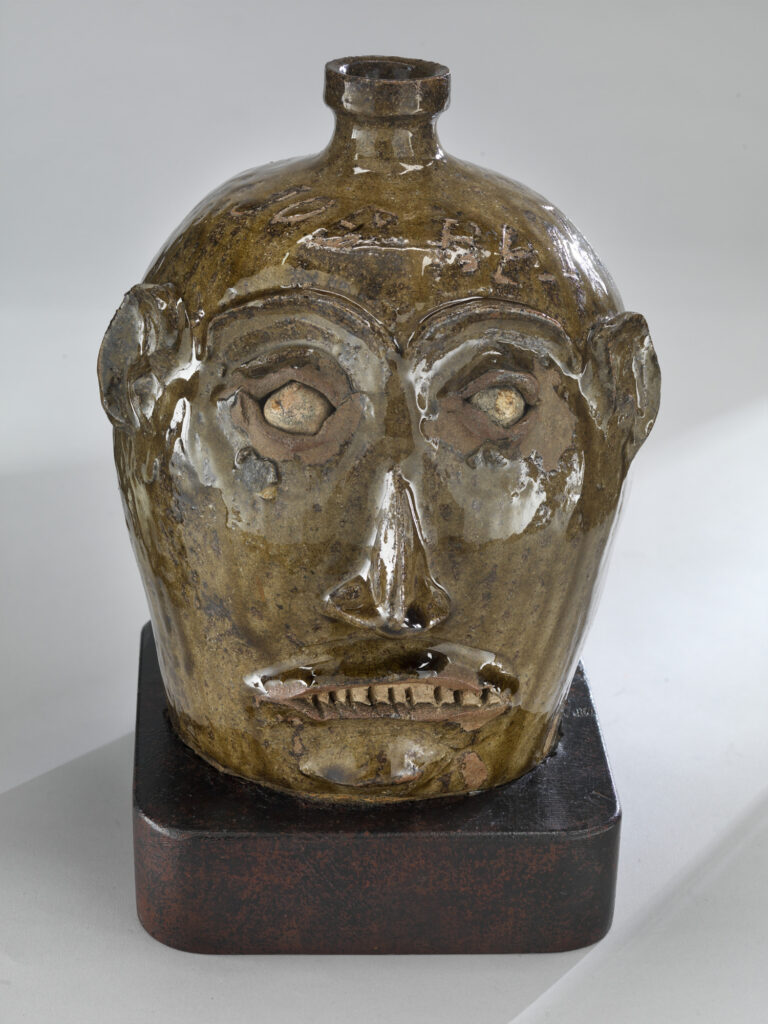
A Portrait-Like Face Jug
As Luberda explains, “The BMA’s Face Jug mirrors the Smithsonian’s piece in myriad ways—the way that it’s potted, the shape, how the handle is attached, as well as the way the eyes are inset. Like brushstrokes for a painting, the way a pot is made is like a signature, and this piece has been attributed to the same hand. It’s a celebrated addition to the BMA’s collection because we have one of the two known face jugs by Justice in the United States.”
It is estimated that only 200 or so face jugs are thought to exist today.[iv] Adrienne Spinozza, curator of the exhibition Hear Me Now: The Black Potters of Old Edgefield, South Carolina (2022), writes “the vessels were not made for utilitarian purposes or sold, but primarily created by or for enslaved potters for use within the community.”[v] Crafted by Black potters for personal use, these vessels relay a regional artistic style overlaying an otherwise utilitarian object. Face jugs may have had further cultural or spiritual significance related to African diasporic traditions, too, that has since been lost to time.
Luberda continues, “This face jug certainly falls into the more artistic side of the spectrum, artistry over utility. We don’t know why Justice made this. His day job was working in an industrial ceramic factory, but this is a work of artistic expression. This is creativity. It takes practice and expertise to make a work like this.”
Crafted from alkaline-glazed brown stoneware, a hallmark of Edgefield pottery known for its durability, Justice’s Face Jug stands as a testament to his skill and attention to detail. The delicately modeled features, from the thickly sculpted eyebrows to the incised teeth and eyes with carved irises made of kaolin, showcase his ingenuity and craftsmanship. Kaolin clay is used to make porcelain and is prevalent in South Carolina, where it is called either unaker, its Cherokee name, or “Cherokee Clay.” In a touch of virtuosity, the eyes are mobile, rolling as the jug is handled. Despite being over a century old, Justice’s Face Jug remains remarkably preserved, inviting museumgoers to appreciate his artistry and innovation.
“What strikes me about this Face Jug is its personality,” Luberda states. “The jug is the size of a human face, and there’s an accurate scale to the eyes, the eyebrows, the ears, even the mouth. This piece is more portrait-like than other face jugs, which are more abstract.”
Fortune Justice’s Face Jug is both the Museum’s first face jug and the first Edgefield pottery purchase. Prior to the acquisition of his face jug, the BMA possessed only one other work by a Black potter predating the 20th century, a late 18th-century Oyster Jar crafted by Thomas W. Commeraw (active 1796-1820). The work also serves as a touchstone for understanding key contemporary ceramics, like the Museum’s work Phone Jug by Woody De Othello, which is modeled on the face jug tradition.
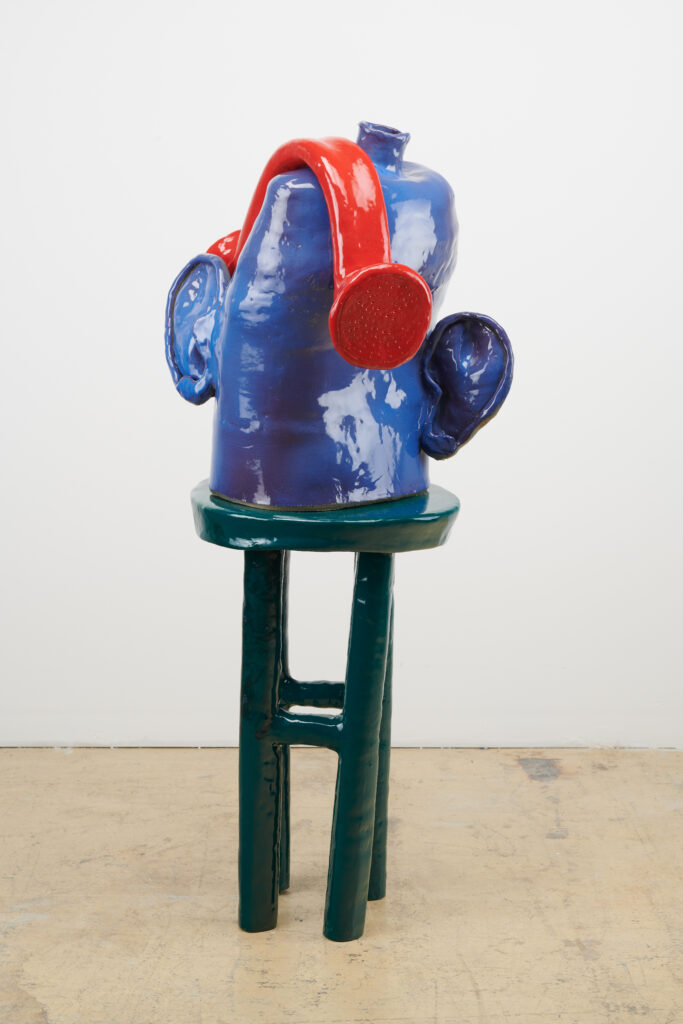
Justice’s work thus bridges time, charting the trajectory of Black ceramicists in America and connecting him to contemporary artists who use clay to reflect on Black history and the present moment such as Othello, Roberto Lugo, and Theaster Gates.
NOTES
[i] Corbett Toussaint, “Edgefield District Stoneware: The Potter’s Legacy,” Journal of Southern Decorative Arts. Vol. 41 (2020). Museum of Early Southern Decorative Arts. https://www.mesdajournal.org/2021/edgefield-district-stoneware-the-potters-legacy/
[ii] Rachel Haynie, “First There Was Clay: Corbett Toussaint’s Discovery of the Noble Jar,” Columbia Metropolitan. July-August 2018. https://columbiametro.com/article/first-there-was-clay/
[iii] Toussaint, “Edgefield District Stoneware: The Potter’s Legacy.”
[iv] Haynie, “First There Was Clay: Corbett Toussaint’s Discovery of the Noble Jar.”
[v] Adrienne Spinozzi, “Confronting, Collecting, and Celebrating Edgefield Stoneware,” in Hear Me Now: The Black Potters of Old Edgefield, South Carolina. Edited by Adrienne Spinozzi. New York: The Metropolitan Museum of Art (2022), page 37.



